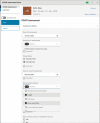Leveraging PEPFAR-Supported Health Information Systems for COVID-19 Pandemic Response
- PMID: 36502426
- PMCID: PMC9745247
- DOI: 10.3201/eid2813.220751
Leveraging PEPFAR-Supported Health Information Systems for COVID-19 Pandemic Response
Abstract
Since 2003, the US President's Emergency Plan for AIDS Relief (PEPFAR) has supported implementation and maintenance of health information systems for HIV/AIDS and related diseases, such as tuberculosis, in numerous countries. As the COVID-19 pandemic emerged, several countries conducted rapid assessments and enhanced existing PEPFAR-funded HIV and national health information systems to support COVID-19 surveillance data collection, analysis, visualization, and reporting needs. We describe efforts at the US Centers for Disease Control and Prevention (CDC) headquarters in Atlanta, Georgia, USA, and CDC country offices that enhanced existing health information systems in support COVID-19 pandemic response. We describe CDC activities in Haiti as an illustration of efforts in PEPFAR countries. We also describe how investments used to establish and maintain standards-based health information systems in resource-constrained settings can have positive effects on health systems beyond their original scope.
Keywords: COVID-19; EMR; Haiti; PEPFAR; SARS; SARS-CoV-2; coronavirus; coronavirus disease; electronic medical record; health information exchange; health information systems; public health surveillance; respiratory infections; severe acute respiratory syndrome coronavirus 2; viruses; zoonoses.
Figures







References
-
- Kaiser Family Foundation. Global health policy: the U.S. & the global fund to fight AIDS, tuberculosis and malaria [cited 2022 July 12]. https://www.kff.org/global-health-policy/fact-sheet/the-u-s-the-global-f...
Publication types
MeSH terms
LinkOut - more resources
Full Text Sources
Medical
Research Materials
Miscellaneous

